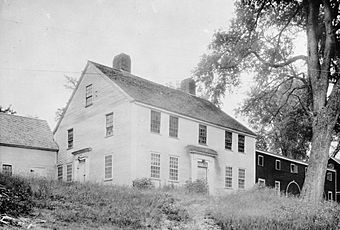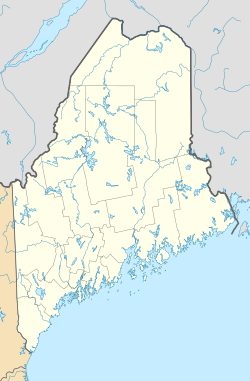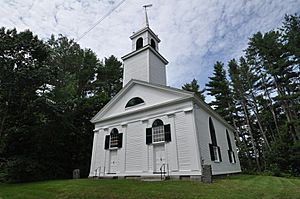Head Tide Historic District facts for kids
Quick facts for kids |
|
|
Head Tide Historic District
|
|

The Jeremiah Jewett House, c. 1940
|
|
| Location | Both sides of Sheepscot River, Alna, Maine |
|---|---|
| Area | 60 acres (24 ha) |
| Built | 1787 |
| Architectural style | Greek Revival, Federal, Gothic Revival |
| NRHP reference No. | 74000320 |
| Added to NRHP | November 19, 1974 |
The Head Tide Historic District is a special place in Alna, Maine. It's located where the Sheepscot River meets the ocean's influence, which is called the "head of tide." This area used to be busy with factories and mills. Now, it's a quiet, rural village. Many of the houses here were built before 1860. This historic district was added to the National Register of Historic Places in 1974.
Exploring Head Tide Village
Head Tide Village is in northern Alna. It sits along Head Tide Road. This road crosses the Sheepscot River. Most of the village buildings are on the east side of the river. However, the main public buildings are on the west side. These include the Head Tide Church, built in 1838, and the old schoolhouse. Just east of the bridge, you can see the old Jewett General Store building from 1884. Along the river banks, you might spot old foundations. These are reminders of the village's busy industrial past. They are mostly below the dam, which was first built in 1760.
A Look at Head Tide's History
People started settling along the Sheepscot River after 1760. This was when fighting with Native Americans ended. In 1760, Lincoln County, Maine was created. The next year, Doctor Silvester Gardiner received land that included the Head Tide area. One of his first land sales was to David Nelson. Nelson built the first dam there.
The village was originally part of Newcastle, Maine. It grew big enough to become its own town in 1794. It was first named New Milford because of its many mills. Later, it was renamed Alna. In the early 1800s, Head Tide Village was very important. It had six water wheels. These wheels powered mills that cut lumber, ground grain, and made textiles. The village was the economic heart of the town.
The Decline of the Mills
Over time, new technology changed things. Also, Head Tide's remote location made it harder for its businesses to compete. In 1896, a big spring flood destroyed the mills on one side of the river. Then, in 1924, a fire destroyed the mills on the other side. Only one mill was rebuilt after these events. It was eventually torn down in 1949. This marked the end of the village's industrial era.




